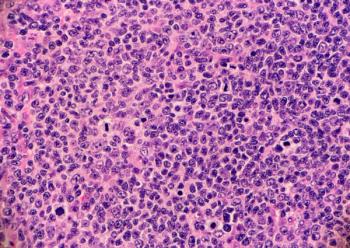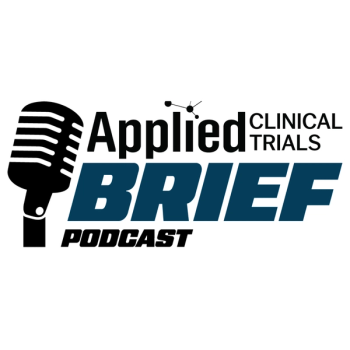The foundational question posed is: are decision-making processes meaningfully different between big pharma and small? Early-stage pharma/biotech firms are even more salient. Yet, the operating environment has changed dramatically, with the rise of artificial intelligence (AI), real-world evidence (RWE), regulatory transformation, and shifting capital flows fundamentally reshaping the life sciences sector.
Key findings
- AI drives decision inputs: In 2025, both big pharma and small pharma use advanced predictive modeling, digital twins, and AI-powered analytics throughout R&D and regulatory processes. This reduces uncertainty at candidate selection, enables virtual clinical trials, and optimizes portfolio prioritization.
- Data-rich collaborations dominate: Big pharma’s portfolio replenishment increasingly depends on sophisticated partnerships, including option-based deals and milestone-driven collaborations with nimble biotech equipped to harness AI, patient registries, and real-world data. Such partnerships accelerate asset de-risking (see 2025 GSK/Boston Pharmaceuticals and Sanofi/Vigil Neuroscience deals).
- Prioritization and metrics evolve: Where historically big pharma employed heavier bureaucracy and differentiated risk standards for internally developed vs. in-licensed programs, in 2025, access to harmonized, AI-curated data sources and digital collaboration platforms has flattened many internal/external differences.
Recent examples
1. Accelerated drug discovery & target identification
Traditional challenge: Drug discovery used to be a slow, expensive, and high-risk process, frequently taking over a decade and billions of dollars to move just one compound from bench to market.
AI’s impact
- Target identification: AI shifts through genomics and biomarker data to propose new drug targets no human team could efficiently pinpoint.
- Example: AlphaFold, Google DeepMind’s AI, has revolutionized protein structure prediction, making it possible to rapidly and accurately model complex protein targets for Alzheimer’s, cancer, and other intractable diseases.
- Virtual screening: AI-powered platforms like Atomwise and Insilico Medicine screen millions of compounds in silico, predicting both efficacy and off-target toxicity, then prioritize those likeliest to succeed.
- Result: This means more compounds can be evaluated, bad candidates are discarded early, and discovery can be as much as 40% faster and 30% cheaper.
Five ways AI is transforming pharma operations
- Accelerated discovery: AI identifies novel drug targets and screens compounds faster and cheaper.
- Smarter trials: Digital twins and predictive analytics shorten timelines and improve recruitment.
- Data integration: Real-world evidence and trial data are unified for deeper, faster insights.
- Regulatory automation: AI streamlines submissions, reduces errors, and speeds approvals.
- New business models: AI-driven partnerships create more agile and de-risked R&D pipelines.
2. Smarter and more efficient clinical trials
Traditional challenge: Clinical trials are the most expensive, lengthy, and failure-prone stage. Only about 10% of compounds entering trials are approved, resulting in massive waste.
AI’s impact
- Digital twins: AI generates virtual “twins” of actual trial participants, using deep patient data to model likely outcomes if on placebo versus treatment.
- Example: Sanofi, working with AI partners, now simulates patient populations digitally. This enables earlier, less risky evaluation of drug candidates—and reduces the number of human trial subjects needed in actual studies.
- In trials for rare diseases, digital twins can supplement real control arms, increase statistical power, and lower costs.
- Predictive analytics and recruitment: Companies use AI to select ideal trial sites and match eligible patients based on genetic/clinical profiles.
- Example: Virtual assistants at Sanofi now track enrollment, automate site setup, and suggest retention strategies, improving trial completion rates and diversity.
- Machine learning forecasts adverse events and trial dropouts before they happen, allowing initiative-taking adjustments.
- Result: Average clinical development timelines are shortened by over 25%, with significantly lower attrition.
3. Data integration and RWE
Traditional challenge: Fragmented, siloed data meant missed opportunities, slow learning, and non-agile responses.
AI’s impact
- Integrative analysis: AI unifies real-world evidence (EHRs, claims data, wearable data) with clinical trial information, unlocking insights into drug effectiveness and safety.
- Example: Novartis applies AI-driven real-time manufacturing analytics to detect and address quality issues, reducing batch waste and ensuring consistent safety standards.
- Result: Enhanced post-marketing surveillance, faster responses to safety signals, and improved regulatory relationships.
4. Automated regulatory submissions and compliance
Traditional challenge: Regulatory submissions were highly manual, error-prone, and time-consuming, often delaying launches by months.
AI’s impact
- Automated documentation: AI platforms now aggregate trial data, auto-generate submission documents, and check for compliance issues, reducing the risk of costly errors.
- Result: Multinational pharma reports up to 90% reduction in documentation mistakes and faster time to approval.
- Regulatory guidance: AI helps interpret evolving guidance (like FDA and EMA’s new positions on RWE and AI) so companies stay compliant with the latest standards.
5. Transformative business and R&D models
Traditional challenge: Drug development was a sequential and conservative process, with limited feedback loops.
AI’s impact
- Generative AI assistants now produce concise trial analyses, maintain meticulous records, and suggest next steps—freeing human experts for higher-level thinking.
- Example: Insilico Medicine’s AI-generated drug, INS018_055, advanced to Phase II trials for a rare lung disease in 3 years—a process that would traditionally take more than a decade.
- Business model shift: Partnerships between big pharma and AI-centric startups are common, creating hybrid R&D models that are nimble, data-driven, and collaborative.
- Option-based small-big pharma partnerships: Small biotechs controlled by VC or PE funds now frequently deal with options for Big Pharma to acquire/partner at defined development milestones.
- Example: The Sanofi-Vigil Neuroscience deal illustrates big pharma securing an innovation pipeline while allowing small firms to capture upside from late-stage validation.
The bottom line
AI is no longer peripheral; in 2025, it will be the engine driving pharma R&D acceleration and risk reduction. Real-world deployments span from molecules to market, with measurable gains in speed, accuracy, cost control, and ultimately—the delivery of better therapies to patients.
Recommendations for industry professionals
- Leverage AI and RWE across the pipeline: Ensure your R&D and business development teams have strategies to harness real-world data and advanced analytics at every decision point, from candidate selection to post-market monitoring.
- Structure collaborations for speed and resilience: Prefer flexibly structured deals (options, milestones, early data-sharing) that accelerate de-risking and enable rapid pivoting as new data emerges.
- Flatten organization silos: Use digital collaboration tools to standardize metrics and review processes across internal and external programs, minimizing politics and aligning incentives.
- Regulatory automation and intelligence: Identify opportunities to implement AI for regulatory documentation, compliance monitoring, and communication with regulators, shortening timelines and reducing approval risk.
- Skills development: Invest in upskilling teams in AI, data science, digital project management, and regulatory affairs to remain competitive.
Conclusion
While the central thesis—differentiated decision-making in drug development between big and small pharma—remains relevant, the gap is closing as both classes of organizations are compelled by efficiency, external innovation, and AI-driven transformation. Those who best integrate cross-organizational data, leverage AI, and embrace flexible deal making are poised for success in the current and future biopharma landscape.
Partha Anbil is at the intersection of the Life Sciences industry and Data & Analytics, including GenAI/ML/NLP. He is currently a Senior Advisor to NextGen Invent Corporation.
Jayanthi Anbil has over 15 years of experience in the Life Sciences Industry. Until recently, Jayanthi was with ICON Plc as a Global Business Intelligence Manager.
*Disclaimer: The views expressed in the article are those of the authors and not of the organizations they represent.





